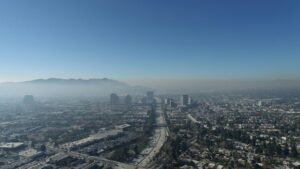Widespread flash flooding across the Northeastern United States has prompted states of emergency in both New York and New Jersey. The declarations were made by New York Governor Kathy Hochul and her acting counterpart in New Jersey as severe storms swept through the region late Thursday.
The National Weather Service (NWS) issued flash flood warnings that stretched along the urban corridor from the Washington-Baltimore region through Philadelphia, Wilmington, Delaware, and into the New York City metropolitan area.
Social Media Captures Flood Chaos in Queens
Flood visuals quickly flooded social media as the storms intensified. One viral post read:
“Historic flash flooding inundates Queens as intense storms drop up to 3″/hr, with 5–8″ expected. NYC and NJ declare states of emergency—aging sewers overwhelmed, recalling Ida-style chaos.”
Water could be seen cascading down subway steps and pooling in residential areas, overwhelming drainage systems and disrupting daily life.
Mayor Eric Adams: “Don’t Drive. Get Out of Basements.”
I’ve issued a state of emergency. The Travel Advisory and Flood Watch are in effect until 8 AM. Stay where you are if you can.
Don’t drive. Roadways are flooding, and crews are responding.
If you live in a basement apartment, and haven’t yet moved to higher ground, move now. pic.twitter.com/lIUMyu2DlC
— Mayor Eric Adams (@NYCMayor) July 31, 2025
As rain battered the city, NYC Mayor Eric Adams issued an urgent warning via video:
“I’ve issued a state of emergency. The Travel Advisory and Flood Watch are in effect until 8 AM. Stay where you are if you can,” said Adams. “Don’t drive. Roadways are flooding, and crews are responding.”
He also urged residents in basement apartments to move to higher ground immediately, citing the high risk of life-threatening floods.
What’s Causing the NYC Floods?
According to the National Weather Service, the severe flooding is being caused by a cold front colliding with an unstable air mass and exceptionally moist atmospheric conditions, producing intense rainfall rates of up to 3 inches per hour in some areas.





